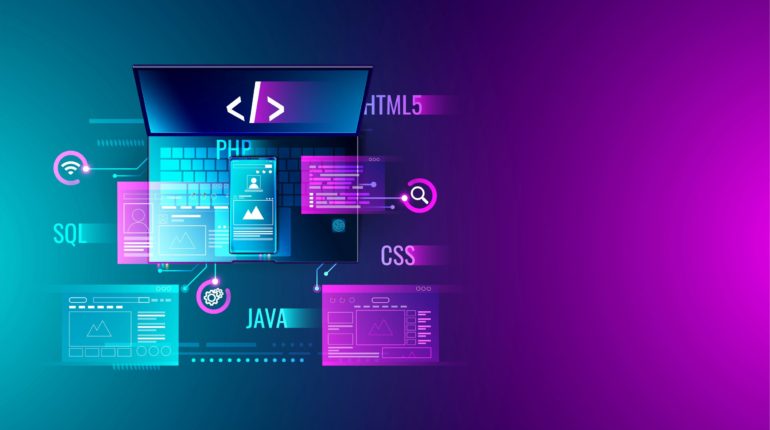Full Stack Web Developer in 2021 – The Complete Guide
Full Stack Web Developer in 2021 – The Complete Guide
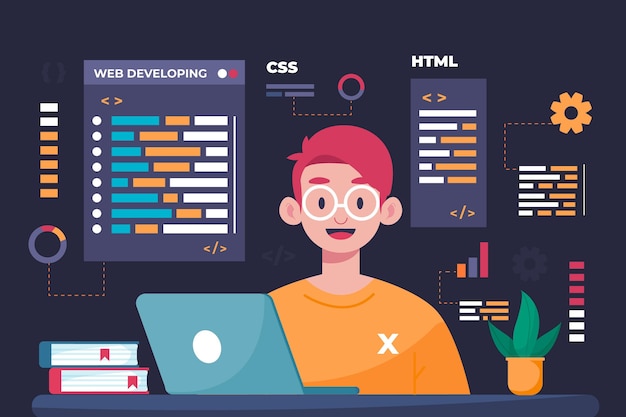
Being a full stack web developer is currently the foremost attractive job within the IT industry in terms of demand, career growth, annual hike in wages, and reputation. If you’re looking forward to becoming a full stack developer, start with the correct educational program.
What was your first reaction and feeling when you created your first login form on a web page after a lot of trials and tested templates (It’s not like you have created everything from the scratch)? How was the satisfaction feeling when you gave layout to your first web application after multiple changes (it’s obvious to look at other websites and templates for reference as per requirement)? How did you feel if you managed thousands of confidential user details effectively at the back end to create an application (was it scary…)?

Many of our web developers go through all of the above stages and at the beginning, some can be stressful, but when they see their platform live and people use it around the world, the overwhelming feeling is thrilling and incredible. A web developing company is responsible for several activities, ranging from the collection of specifications to the development of a website.
New technologies and tools in the industry are emerging every year to increase efficiency for developers and to improve the site for consumers. It is difficult for them to keep up with the web creation game. Today we will explore a complete map in 2021 to become a web developer. For any kind of developer, this is a realistic guide (front-end, backend, and full-stack).
What is Full Stack Web Development?
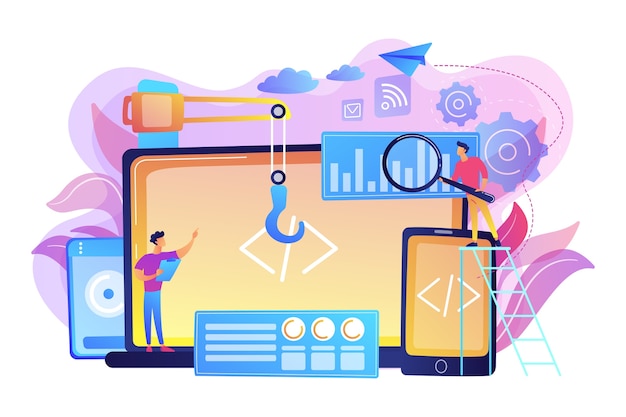
The processes involved in software development are primarily divided into two categories: front-end and back-end development. Production at the front end is done by the customer; a developer at the front end ensures that the result is physically pleasing and user-friendly. Backend development drives the application’s server; the programming language is used by a backend developer to share information between the browser and the databases. The construction of a full package applies both to the development of a website or application’s front end and backend.
Now, what is the full stack? A software stack is a multi-component array in a joint software framework to make sure the application is operating smoothly. This covers items from applications, patches, code frameworks, servers, operating systems, database tools, etc. These modules are on top of the other to allow user interaction, calculations, and back-end functions: a complete stack.
Who’s a Full Stack Web Developer?

A full stack web developer is not an Ordinary Backend or Front-Engineering developer. Comprehensive stack programming guarantees expertise in both front-end and back-end technology and a strong knowledge of Web architecture. They have multi-taskers who work with the front-end, back-end, browser, database, and API, that is to say, the whole computing stack is being managed by full stack developers.
- Its main functions include:
- Provides customers and partners with project specifications
- Project needs study and solutions creation
- Conceive user relationships
- Databases and server’s development
- Code error testing
- Change codes with software and hardware
- Methodical problem-solving research methods
- Optimizing cross-platform
One needs substantial expertise and a deep understanding of software development to be an experienced stack developer. Since their know-how adds to the software’s overall consistency, full-stack web developer (s) are unique assets in a squad. They have fundamental architecture experience, strong database administration skills, and language awareness.
Basic Tools and Software for Full Stack Web Developer
- Computer & OS: Without a computer and OS running on it, you cannot write code. You do not need any fancy machine (If you have a decent computer…) to learn web building. Every kind of laptop or notebook may be used. You can use macOS, Windows (Latest version), or Linux for your operating system, whichever is convenient to you.
- Text Editor/IDE: There is no doubt that for most cases and languages VSCode is fine. It offers excellent results, fantastic extensions, an integrated terminal, and several applications. The VSCode survey in StackOverflow 2019 was also the first choice for developers. There are other strong choices like Sublime Text, Vim or Atom as well. If we’re talking about Visual Studio IDEs (ASP.net or C#), Eclipse, Java are nice choices.
- Web browser: The majority of developers use either Chrome or Firefox as their first preference. Chrome is fast, with the V8 motor (JavaScript engine). Firefox has come a long way and not in the Chrome Browser is any of the positive stuff. Both browsers have great dev resources to resolve web creation problems. Safari, Edge, and Brave are also web browsers to get acquainted with.
- Terminal: Using certain system commands, you would be dealing a lot with CLI. For your web development project, you can use the regular or third-party terminal. The following options are available: Bash, Zsh, Powershell, Git Bash, iTerm, Hyper.
- Design (optional): This isn’t something that everybody wants to understand. There are certain teams of organizations that create graphics, signs, or illustrations. But, you will have to study Adobe XD, Photoshop, Sketch, or Figma whether you are a front-end developer or if you’re working as a freelancer.
10 Skills For Becoming a Full Stack Developer

In the IT industry, a full stack developer may be a master of all development skills. From understanding coding to using different frameworks and libraries, a full stack developer must ace a bunch of non-negotiable skills to place together a whole tech stack. Here could be a list of 10 skills you wish to become a full stack developer:
1) Back-end Languages
Back-end languages help a full stack developer define the functionality and logic of an online application. There are a variety of back-end languages to settle on from. the subsequent are a number of the foremost important languages that help a full stack developer:
- PHP: Released in 1995, PHP could be a back-end language that is an excellent option for beginners. The setup is simple and is more tolerant of errors.
- Ruby: Ruby or Ruby on Rails could be a back-end language that has little back-end work. it’s an open-source language that permits you to create basic tasks. it’s a smooth learning curve and an unbelievable array of frameworks and libraries. Airbnb, Scribd, and TaskRabbit are a number of the popular companies that use Ruby.
- Python: employed in small- and large-scale projects, Python could be an artificial language that supports a variety of programming paradigms. it’s object-oriented and focuses on code readability.
2) Front-end languages (HTML/CSS)
HTML (HyperText Markup Language) and CSS (Cascading Style Sheets) contribute to the appearance and feel of a webpage. HTML arranges the web page when the CSS takes charge of its visual layout. It helps to make interactive web applications; a full stack developer has to have skills for using these front-end languages.
HTML helps the authors of web pages to:
- structure the content on web pages to different headings, sub-headings, sections, paragraphs, and so on.
- create forms for transactions, to order a product, or to form reservations
- to include audios, videos, spreadsheets, and other applications
- to retrieve information using hypertext links
CSS is to:
- define the presentation of the webpage
- format the layouts, fonts, colors
- tailor pages for various forms of devices (small screens, large screens, printers)
3) JavaScript
JavaScript may be an artificial language that applies in both front-end and back-end engineering. it’s common to make mobile applications, games, websites, presentations, and so on.
4) Design Skills
Graphic design skill is that the cherry on top for full stack developers. they have to understand the fundamental principles of designing prototypes. Though they have not been expert designers, knowing the fundamentals will help simplify their tasks and reduce their dependence on designers. If you’re assuming to stand to enter your career, learning the fundamentals of Photoshop, Figma, and Sketch will be available in handy.
5) Direction Skills
Every software needs one or two databases to store its data that the developers can access later. Therefore, having a clear understanding and skills to manipulate databases shows the talent of a developer. A full stack developer has to have refined management skills and good knowledge of relational databases.
Some of the commonly used databases fully stack development are:
- Oracle
- Redis
- MongoDB
- SQLServer
6) HTTP and REST
Representational State Transfer (REST) and Hypertext Transfer Protocol (HTTP) are two different and important elements for the full stack development. HTTP may be a client-server protocol for every kind of knowledge exchange. it’s also for fetching resources like HTML documents. it’s simple, extendible, and a big contribution to the general performance of the appliance. REST is an interface that wants to gather data without compromising the steadiness of the applying. It allows room for flexibility because the code on the client’s end can change without compromising the server’s operation.
7) Knowledge of Web Architecture
Full stack developers must have a comprehensive knowledge of the net architecture. the event of an application may be a sophisticated process that involves multiple complex computational tasks. an honest full stack developer should know where to locate each task, a way to structure and store data in databases, a way to structure the code, a way to separate files, and so on.
A perfect understanding of web architecture helps the complete stack developer to usher in efficiency, scalability, security, and reliability. Web architecture may be a constantly evolving space. Therefore, a full stack developer has to define the wants and possibilities before engaged in the event.
8) NPM
NPM is an easy-to-use package manager that full-stack developers must use for managing the local dependencies of their projects. It helps full stack developers to auto-update their packages similarly as install all the specified dependencies in a very single command.
9) Soft skills
Apart from flawless front-end and back-end engineering skills, a full stack developer requires the subsequent soft skills:
- Problem-solving skills
- Effective communication skills
- Creativity
- Patience
- An eye for details
- Analytical skills
- Leadership skills.
10) Sourcetree and Git
Version control or a source system could be a software tool that helps a developer track and manage the changes made to a software code. Version control systems like SourceTree and Git help a full stack developer work faster and smarter while supervising all the modifications made to an ASCII text file.
5 Reasons For Considering Full Stack Web Developer as Career Option
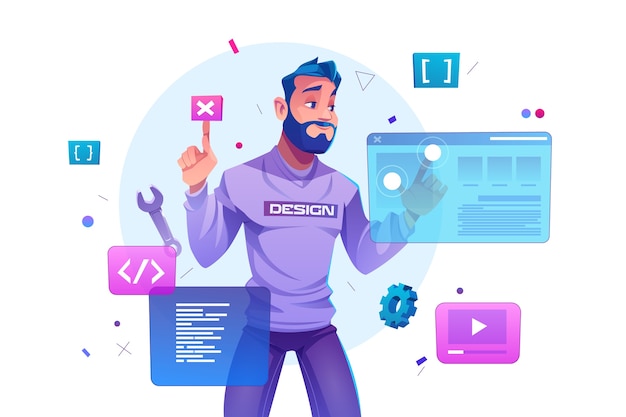
The complete development of a software program is the complete stack development. Complete stack development is responsible for any individual aspect within a user interface, combining the innovative and functional side of an application. In the implementation phase, they handle all three layers: database, display, and logic.
Five reasons to be a full stack engineer. There are:
1. Full stack Web Developer Is All About Versatility:
Multi-developers offering end-to-end applications are complete pile developers. In all areas of software growth, IT companies thank them for their flexibility and experience. That means mastering a whole range of skills would enable you to master. A decent full stack developer will become unavoided to be able to know HTML, CSS, JavaScript, and the back-end language (Python, PHP, Ruby), database storage, HTTP, REST, and NDP. As the architecture is constantly changing, full-stack developers must learn new programs, languages, and resources constantly to keep up-to-date and be updated.
2. The Scope for Growth is Multifaceted:
IT firms have ceased to pursue specialist positions. They also moved to preparation and to choose fully-fledged and scalable stack developers. They offer comprehensive, globally respected solutions and fully-equipped developers with rapid, multidimensional career development. Most full-stack engineers begin their careers as developers on the front or back end. They master every part of creation and are stack-savvy with years of experience, exposition, and understanding. Usually, complete stack developers begin their careers at the entry-level and step up quickly as their technical skills are perfected.
3. Full stack Web Developer is One of the Highest Paid Jobs:
The construction of full stacks is among the world’s most successful works. The full stack development is a required service in any sector because of its effect on business and marketing. It will allow companies to stand out and boost their earnings in the business world. Since full-stack programming is one of the most rewarding IT careers, the remuneration of a stack developer depends on its organization’s position, population, and expertise on factors such as core skills, additional skills (WordPress, UI/UX bases, etc.).
Stack developer’s full wage summary of the United States:
-
- The estimated annual wage for the entire stack developers is $113,462 according to a report done by Indeed.
- The full-stack creator raises $84,903 a year, according to ZipRecruiter.
- The average is $97,500 a year in the middle class.
- A total of $116,504 is earned by a senior full stack creator.
4. Equips for Faster Delivery of Projects:
You should be an experienced communicator if you’re a fully stacked developer and your work profile requires good coordination with team members to streamline the process of production. A complete stack developer learns to produce results efficiently and the toolkit is the most powerful tool in the industry to work intelligently and easily.
5. Greater Responsibility Comes with Greater Productivity:
Customers and the server-side of the software collaborate with a full stack developer. This gives the producer greater leverage of the product and creativity. Full Stack Engineers can see the bigger picture and make decisions more quickly than others. They are autonomous and strong at judging. This artistic freedom along with its ability to judge improves its overall efficiency.
Understand Your Experience Level as Full Stack Web Developer
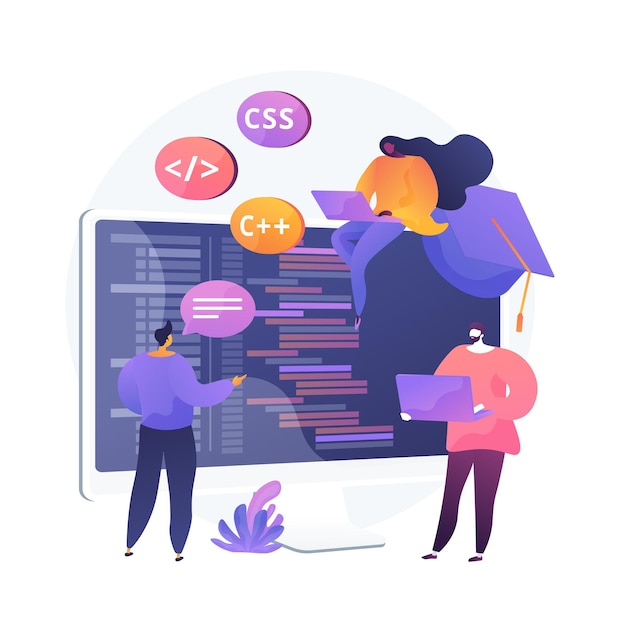
Your experience and credentials will, of course, support you with the transition. The method would be simple for you if you have extensive technological skills. If you’re an expert front or back-end developer at the same time, the journey will be quick. But you’re definitely going to face many obstacles if you were never a developing entrepreneur and never have practical expertise in working with construction projects.
You can even become a stack developer with hard work and persistence whether you are a code enthusiast or a novice, with your basics fine. Understand where you are on the list of beginners and identify your objectives.
1) One of the types you could come to be.
2) You do not have any programming experience, but you do use all web apps and forums, you do not know their function, how they are designed and you do not know about the web architecture. However, web creation and all the technical sides of it are fascinating for you.
3) You’re a lover. You’ve been involved in simple coding programs, you understand the programming fundamentals, you know how web apps function, you’ve created simple websites before, you know HTML, CSS, PHP, and so on. You try to study the field yourself, and you grasp web design fairly.
You’re a specialist in the field. In front or back-end engineering, you have had an extensive background. You strive to upgrade your competencies to become a good complete stack creator.
Decide Your Goal or Path First for Full Stack Web Developer

For the following reasons you can opt to be a complete stack developer:
There are a lot of innovations, developments, and resources we will explore so we won’t have to get confused, so you must know first what you want to do to become a web developer. There are some common explanations for being a web developer…
- You want to be the most famous and common explanation for a web-based business.
- You want to launch your own company or organization as an independent developer.
- For other businesses, you may become a consultant.
- You can make money by creating your own app.
- This ability you want to use to become a producer of the material.
- Code as a pastime.
You may choose the best tools and technologies for your purpose, from the above field of interest or objective. If you choose to just become a developer on the front-end, you can use the front-end software and technologies. The same is true for the growth of backend and full stack.
6 Important Tips for becoming a Full Stack Web Developer

Now that you simply have decided to land the foremost popular developer job, here are some essential tips to become a top-quality full stack developer:
-
Get Your Front-end Technology Basics Right:
Your knowledge of the basics of full stack development will define the strength of your foundation. Since front-end engineering defines the user experience, it’s mandatory to possess an excellent understanding of front-end engineering. you would like to master front-end technologies like HTML5, JavaScript, CSS3, and also the common front-end frameworks like SASS, JQuery, LESS, AngularJS, etc. it’s on this foundation that the developers choose the acceptable stack for development since each stack constitutes different styles of components.
-
Identify Your Niche:
While a full stack developer wears multiple hats, it’s important to seek out your strength and leverage the identical for your career growth. for example, JavaScript could be a popular interest area for several developers. If you’re keen on JavaScript and are willing to explore it, you may have strong basics in HTML, version control systems, CSS, database systems, web servers, deployment operating systems, and so on.
-
Learn Your Programming Languages:
It’s almost impossible to master all the programming languages considering the range of technology available today. But the trick is to decide on to be told some important languages like PHP, Python, and Ruby rather than trying to be told all the general-purpose languages. But don’t forget to find out the grammar of other languages, moreover as a way to structure, design, and test them.
-
Learn the fundamentals of Design:
Though it’s not mandatory to be an exceptional designer, the fundamental knowledge of the planning aspect always comes in handy for a full stack developer. Knowing the basics of front-end design tools like Photoshop, AdobeXD, Figma will help a developer be self-reliant.
-
Ensure you recognize the way to Use Development Frameworks:
Most development languages include a development framework like Hypernate, JAVA Spring, MyBatis, yin, and so on. These frameworks’ design is to simplify your tasks and save them slowly.
-
Be Database-savvy:
Full-stack developers need databases to store all the information produced and consumed during the event process. These databases might be relational, NoSQL, or NewSQL. These are necessary to safeguard massive amounts of information for updating, expansion, and future reference.
Choose Full Stack Web Developer Learning Program Wisely

You’re not working? Does your work make way for your study versatile enough? You can participate in part-time or full-time training depending on your plans. If you still have hectic full-time work or family duties, take some time over weekends and spend the same time on your full-stack production training. The length in most part-time services is six months or one year. The full-time programs.
-
Full-time Programs:
A three-month full-time intense program is an attractive experience for strongly motivated learners. The students are mostly graduates with training in the industry. They grasp coding and creation at an advanced stage. These programs prepare the students rigorously to gain all the necessary skills and to enable them to reach the labor market as soon as possible. And if you’re a technology fan, a full-time curriculum is best for you, preferably a boot camp. It will strengthen your skills for growth and get you ready for business in a short time.
-
Part-time Programs:
If you’re a busy IT specialist with little training space, a part-time boot camp is the dream option. There is plenty of time for applicants to learn. The price, therefore, depends on the content of these courses. Any free part-time services for students are available, but some of them lack a quality learning environment. Paid classes are more reliable and more formal. Wisely choose your program; steer away from plans with unrealistic performances.
-
Try to Build Projects of Your Own:
The most important approach for improved memory is applied to learn. It is important to practice and evaluate what you know. It is important. Try to carry out basic projects on your study materials or boot camps. It is also possible to volunteer for open-source projects. This helps you work with other developers and also gives your portfolio worth.
-
Focus on Professional Networking:
The ability to extend your educational network constitutes the greatest benefit of boot camps. You meet people who express their dreams and career goals. Contacts and partnerships can be established; people you encounter at boot camps could in the future become mentors or referrals. Developers will also interact with seasoned developers in full-stack developer groups. These forums have an unbelievable source of insight into the industry. Solutions to your complicated questions can also be quickly reached by conversations.
What do as a Full Stack Web Developer?
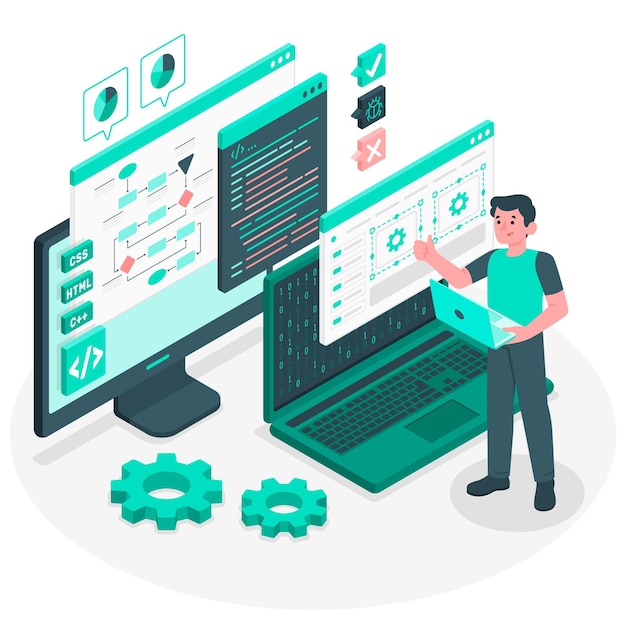
1) Start With HTML and CSS
The main components of web creation are HTML and CSS. Regardless of the progress of your web application, or the platforms and backend vocabulary you use, you have to build your front-end application using HTML and CSS. That is the first thing in web creation to understand.
- HTML5 HTML5: (Semantic tags, attributes, doctype, etc)
- The basics of CSS Font, placement, box-model, etc.
- To align staff or create columns, CSS Grid and Flexbox
- CSS Properties Custom
- For frontend developers, transitions and animations are fairly relevant.
2) Responsive Layouts
Your software should be visible and available on every kind of screen size equipment, like smartphones, tablets, and desktops. Therefore, it is necessary to know how to design or style responsive. Let’s look at a few relevant subjects.
- Find out how to set the viewpoint
- Different device size media questions.
- Widths fluid
- rem units
- First mobile
3) Custom Reusable CSS Components
It is useful to build your own modular, reusable CSS components for your projects rather than relying on big CSS frameworks such as Bootstrap. If you create your own custom interface, you don’t have to download the whole library. You build the component for the specific user interface only.
A new Saas movement recently emerged, which contributes to the efficiency of writing CSS code. Then you won’t have to make too much effort to learn Saas if you already know CSS. Saas is a CSS preprocessor that adds more flexibility and efficiency to standard CSS. You will make the CSS repeat more effectively by using vector, nesting, and conditional. Saas provides stuff such as factors, mixtures, functions, etc. For each reusable part, you can also build your separate Saas file. Sass saves time so probably in 2021 you can master it.
4) CSS Frameworks
CSS frameworks are a little less common than the previous year, but still very pertinent and useful for design-not-good developers. There are several common CSS frameworks for use, some of which are mentioned below.
- Bootstrap (Bootstrap 5 released) is the most common CSS frame to learn. Bootstrap programming also allows you to understand other systems.
- Tailwind CSS is another common system, though a bit different from others. CSS is another one. It’s a series of utility classes so you can make your own buttons and other things that look different. They can also be personalized.
- Materialization This frame is a mix of HTML, CSS, and JavaScript-based on material design. This is also a common and useful library for designing your interface program.
- Bulma Open-source CSS platform, modular and lightweight.
5) UI Design
It would be better for frontend developers if they improve their ability to understand those UI architecture concepts and methods. Somebody else may do this for you in companies but it’s nice to take a look at some simple UI design stuff.
- Contrast and Color
- White Area
- Scaling (sizing relative to other elements)
- Visuals Hierarchy (Arrange in order of importance)
- Typography (Text typefaces, sizing, etc)
6) JavaScript
The next thing you need to master is JavaScript after studying HTML and CSS. For developers, it is really critical to have a strong command of the fundamentals of JavaScript. If you want to work with React, Angular, Node JS, or some other JavaScript platform or library, you can need a lot of JavaScript with server-side languages such as PHP, Python, and ASP.net, which is very much needed. Below are some main topics in JavaScript you can cover…
- JavaScript Fundamentals (variables, functions, loops, arrays, conditionals, etc)
- DOM (Document object model)
- Array Methods for each, map, filter, reduce, etc.
- JSON (JavaScript Object Notation)
- HTTP RequestsFetch API- GET, POST, PUT, DELETE
What to Choose as a Full Stack Web Developer?

1) Basic Frontend Deployment
Now you will have to know how to launch your frontend website on the Internet until you know what technologies or instruments you need to learn in frontend production.
For small businesses, if you create any small apps, landing pages, or personal pages, you won’t need to study DevOps or AWS just because it is brilliant and trendy. You will make life harder rather than simpler. Various paths must be followed. There are some of them…
- Registration of domain (Namecheap, Google Domains, etc.)
- Hosting Managed (InMotion, Hostgator, Bluehost, etc)
- To host Static (Netlify, GitHub Pages)
- Hosting of Email (Namecheap, Zoho Mail, CPanel)
- SSL (Cloudflare, Cloudflare) SSL Certificate.
- For smaller applications, FTP, SFTP (File Transfer Protocol) is fine.
- For the advanced app, SSH (Secure Shell).
- Git and CLI.
Whatever instruments, developments in technology, or measures we explored until now are an integral part of the growth process. But you can design the website for small and independent companies, or you can create a mobile-friendly interface
Use the software or technology we have covered so far to deploy your small application or project. It’s nice to have some front-end frameworks like Vue or Angular or libraries like React when you’re applying for jobs.
2) Front-End Framework and State Management
Frameworks help you to further establish frontiers. There are also benefits, including reusable modules, a more streamlined user interface, or page interaction. Thus, it saves a lot of time to use a framework.
Take an outline template to improve your skills and aim to select one that is already used by most businesses. Learn about state administration, too. The different ways to do that are in each framework. Any of the common structures and state managers are presented below for 2021.
- Reaction: The react library, as compared with other frameworks and libraries, is best used for web creation. For reaction developers, there are still many works available. For state control, you can use the Redux and Context API with hooks.
- Vue: Vue also gains traction and developers can also choose to learn View. View in addition to React and Angular is the easiest to remember. Vue is the visual state controller.
- Angular: In big organizations, this architecture is commonly used. The learning curve is pretty steep. To function with Angular you must learn TypeScript. It enables you to use the capabilities of ES2015 with optional static typing and support. In this context, NgRx and Services are good government managers to understand.
- Svelte: Essentially Svelte is a compiler which in the last two years has become very successful. It has a very simple learning curve, but certainly bigger programs can be challenging for you to work on. It is also a little harder to find a job than the other system. Svelte provides an integrated state management background API.
3) Server-Side Language
At least one server-side language should be known to you. In 2021, those choices are given below to choose a language…
- NodeJS (Not a language but a runtime environment)
- Python (Good for absolute beginners)
- Java (Good for a large organization)
- Php (Good for freelancing)
- Ruby (Less popular in 2020)
- C#
- Kotlin
- Golang
- Deno
Note: Make sure you understand the data structures and algorithms using this langue, no matter which server-side language you choose to learn. Data structures and algorithms are used to render the user data and to refine your web application code. In particular, we suggest that you concentrate on the array and string work (Most important). Both of these you will deal a lot on.
Learn the patterns of software architecture. Provides general reusable solutions to basic issues of design trends. Learning patterns in architecture will help reusable, bug-free, and clean the code. It will accelerate the phase of growth.
4) Server-Side Framework
Once you have learned your own server language, use one of your language systems. You can choose one of the following choices…
- js– Express, Koa, Adonis, Feather.js, Nest.js, Loopback
- Python: Django, Flask,
- Java: Spring MVC, Grails
- PHP: Laravel, Symfony, Codeignitor, Slim
- Ruby: Ruby on Rails, Sinatra
- C#: NET
- Go: Revel
- Kotlin: Javalin, KTor
5) Database
Most web applications require a data-saving location. In certain cases, certain technologies or languages are good for such databases. For eg, M is MongoDB in the Mern stack. In LAMP stack M it is MySQL, but it remains entirely for you to choose a database. We will talk about some famous 2021 databases.
- Relational Database: the most common database now is the RDBMS. It’s also preferable to use PostgreSQL, MySQL, MS SQL.
- NoSql: MongoDB, CouchDB.
- Cloud Database: Firebase, Azure May DB, AWS
- Cache & Lightweight:
GraphQL: (Optional) You will find out about the now-famous GraphQL. This is the API query language. It has a basic JSON-like syntax and can be easily deployed.
6) Testing
Often developers miss studying and believe it’s time-consuming, but we suggest learning to save your time and make your life simpler as a developer.
- Testing Unit
- Testing of integration
- Tests End-to-end
Testing applications are available for Jest and Mocha for JS and PyTest and Robot for Python for various languages.
7) Content Management
In particular, if you are free-standing, you can certainly read about the content management scheme. The content of your website or application may be added by a CMS. Customers should upgrade their own content greatly.
- CMS: Drupal (PHP), Keystone (JavaScript), Enduro, WordPress (JavaScript)
- CMS without heads: (Getting popularity in 2021) Prismic.io, Strapi, Sanity.io, Contentful.
8) Deployment & DevOps
It is a bit complicated to host a full-stack application or backend app, particularly if you have databases, then a frontline application. Make sure you know the way to deploy CLI. There is a distinct DevOps unit of most organizations. Therefore, the experience of DevOps is entirely optional. When you work for your own idea, you will learn this.
Learn the following things for your program to be deployed on the cloud.
- Hosting Platform: Heroku, Digital Ocean, AWS, Azure., Linode
- Web Servers: NGINX, Apache
- Containers: Docker/Kubernetes, Vagrant
- Image/Video: Cloudinary, S3
- CI (Continuous Integration)/CD (Continuous Delivery); Jenkins, Travis CI, Circle CI
Optional to Learn for Full Stack Web Developer
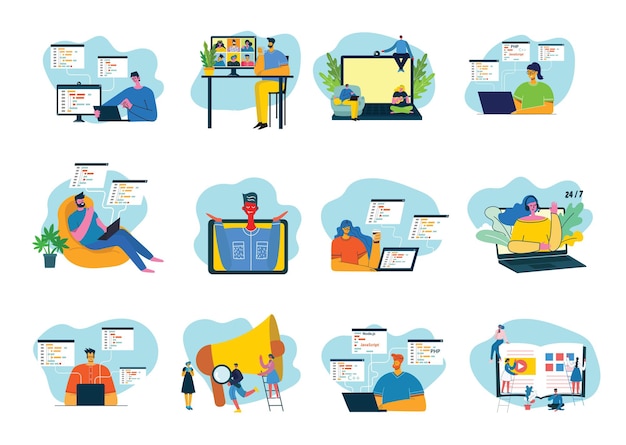
- TypeScript is really common in the industry and you can learn it. It is the JavaScript superset that robustly renders the code less susceptible to errors. For big programs, TypeScript is perfect.
- Learn how to make the server-side. A module that helps you to run react, view, and angular on the server is Next JS (React), NuxtJS (Vue), and Angular Universal (Angular). Many of these features have excellent functions like Better SEO, file system routing, automatic scratching, static exporting, JS CSS, and much more.
- Generators of static sites: Gatsby (React), Gridsome (Vu), 11ty (JS alternatives), Jekyll (Ruby-based), Hugo Static site generators (Go-based).
Most of the frontend creation tools and technologies have been addressed. Let’s now discuss the language and technologies to be a backend or full-stack creator.
Final Thought
All of the above technologies, the techniques are plenty strong to render you a developer in front or rear end. Don’t be overwhelmed by the content of this post. It’s not what you need to read. Select the best software and technologies according to your target.
Follow the following points to find the correct direction…
- Create an educational course depending on your preferences
- Learn the basics and technology required
- See tutorials/videos, read the documentation so make sure you get your coding dirty. Building from what you learn your own project.
- Create a portfolio and behave according to your end objective. Request work, make yourself a customer, etc.
